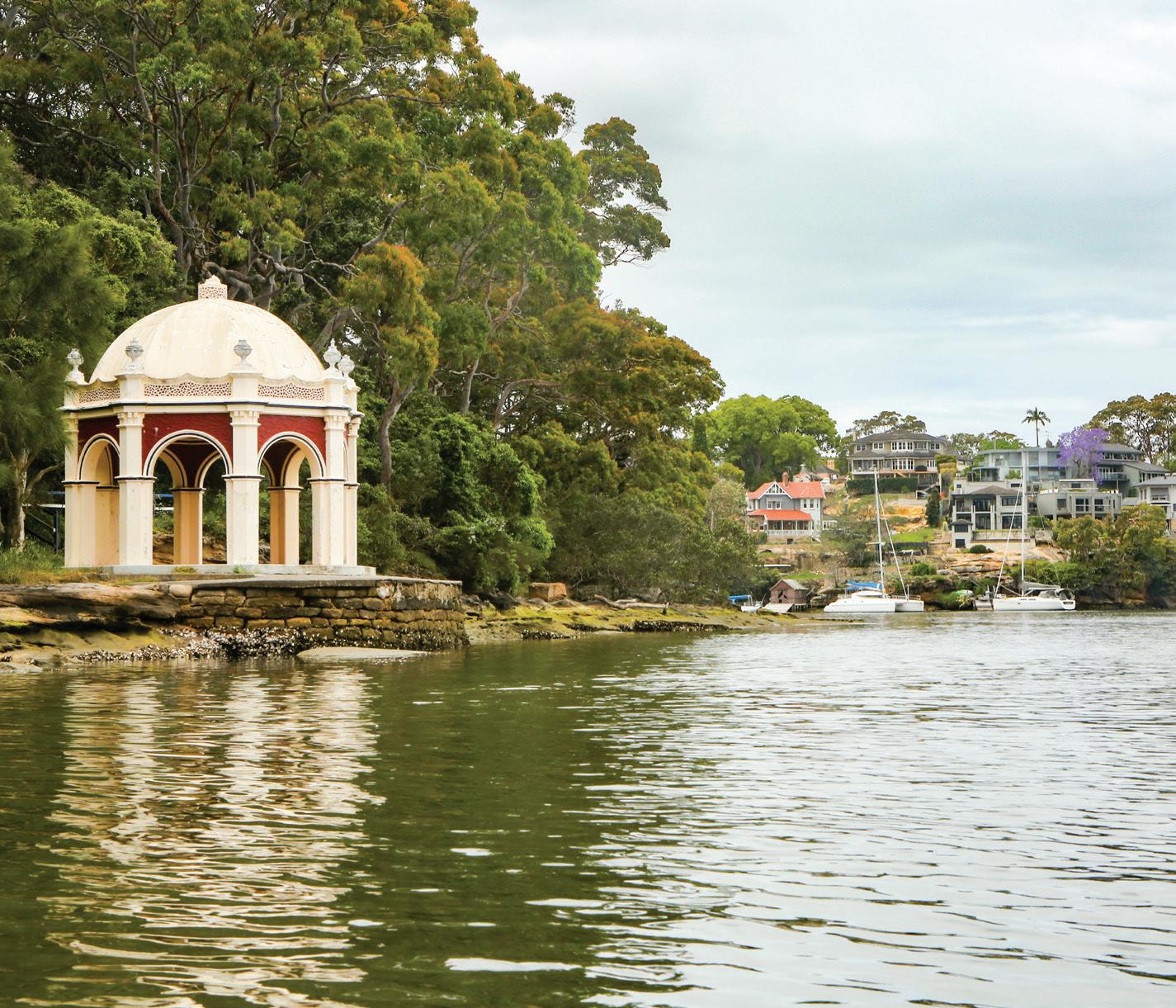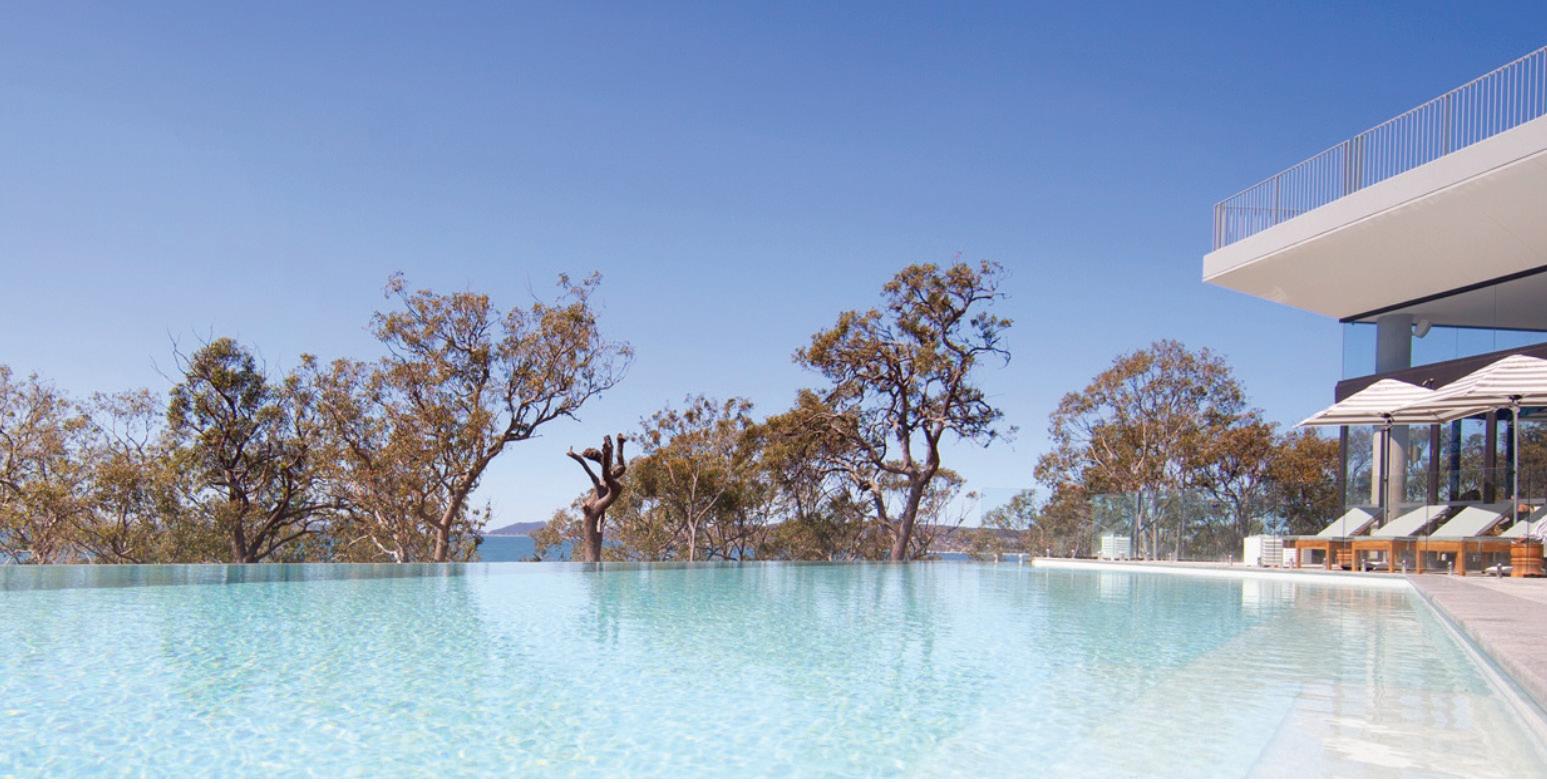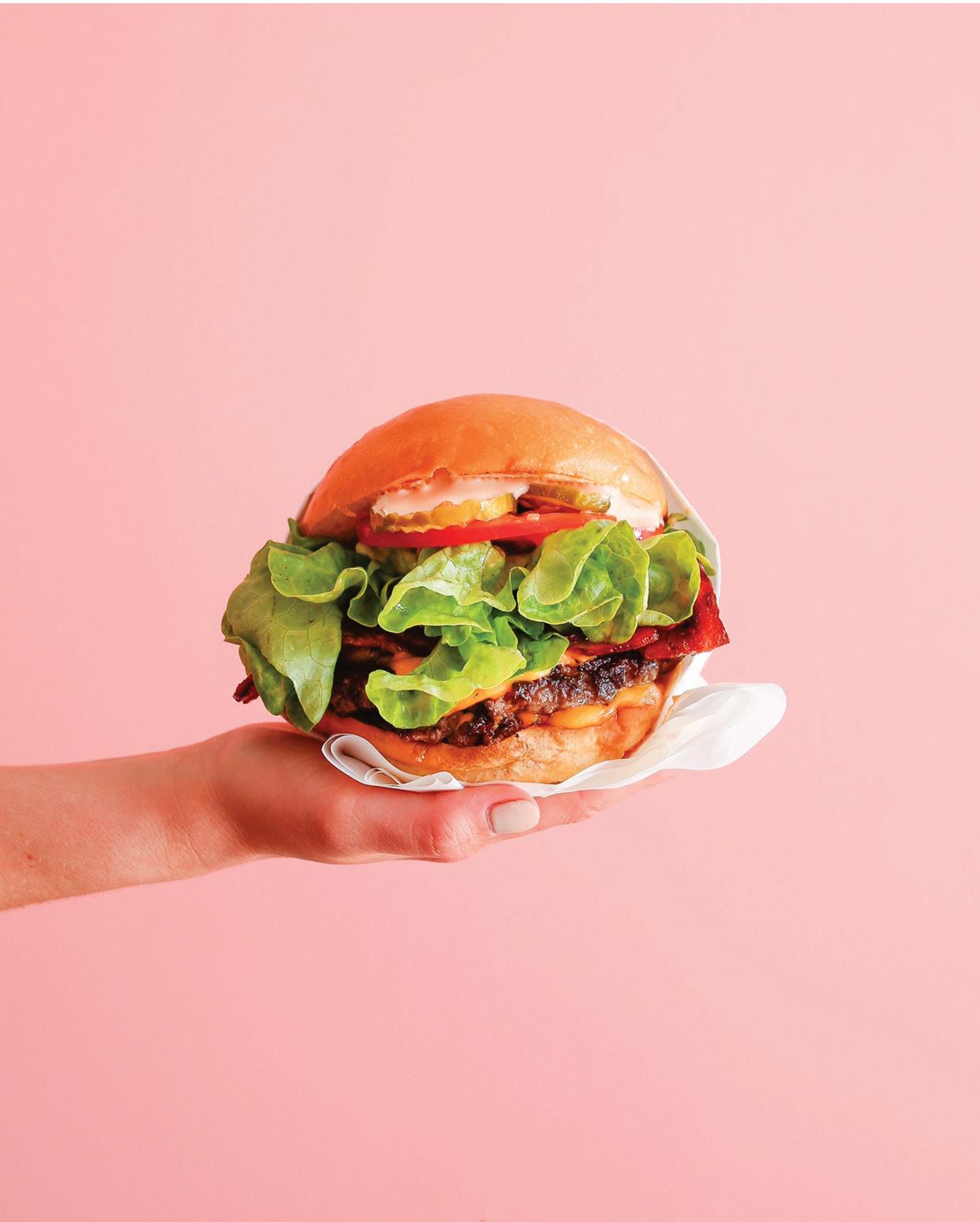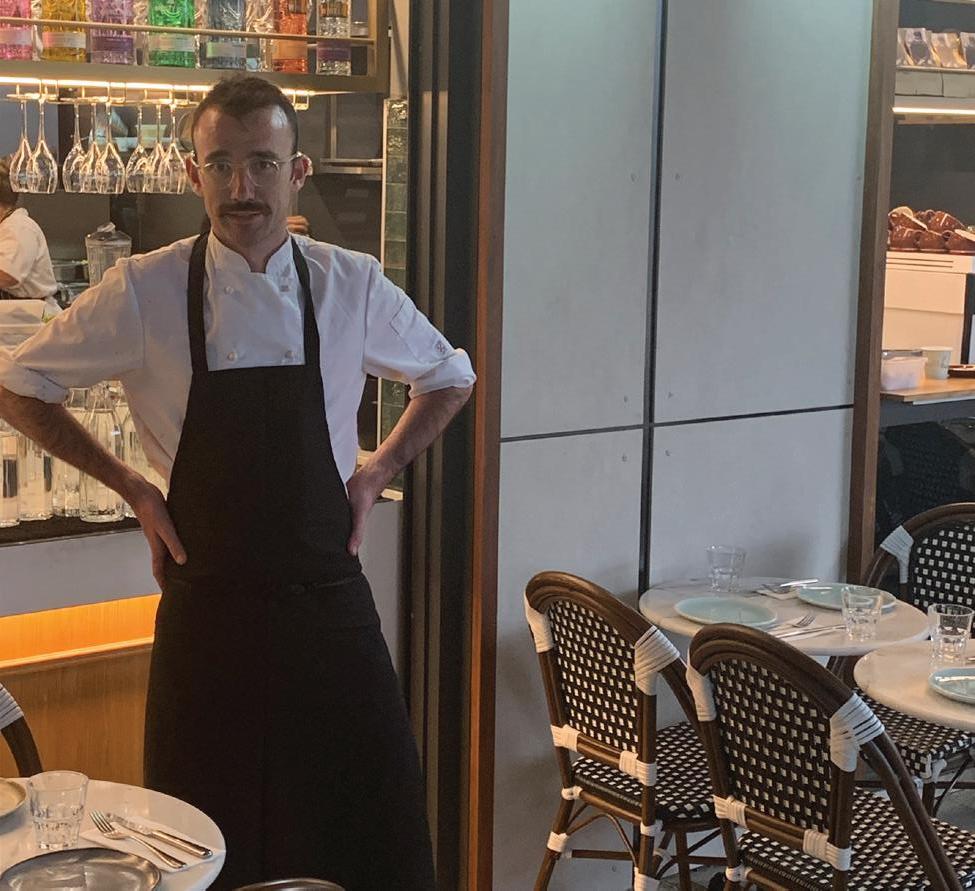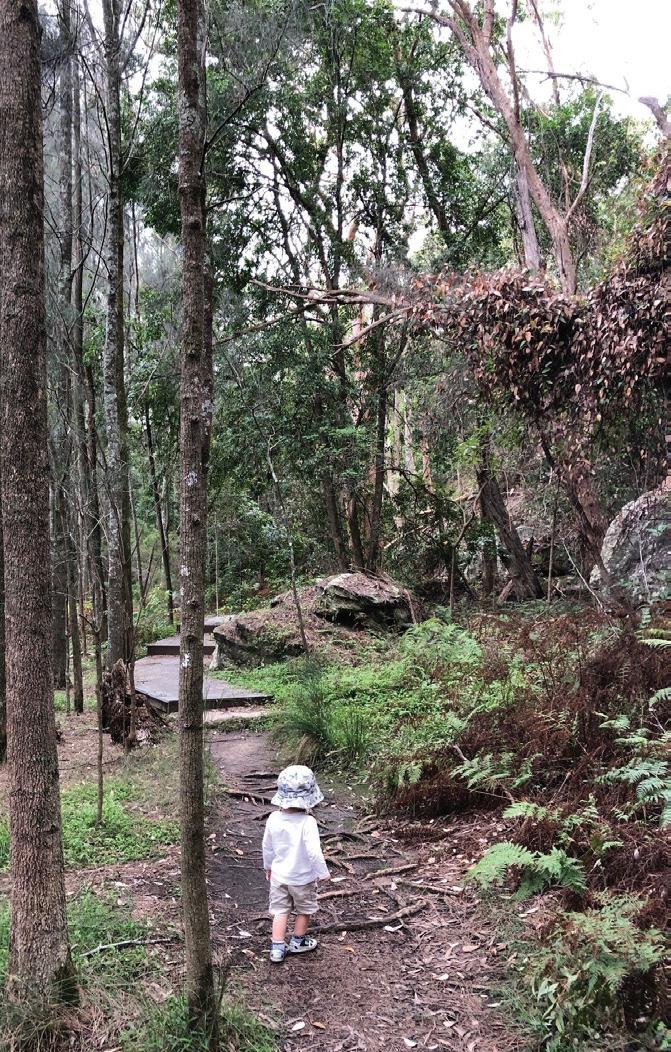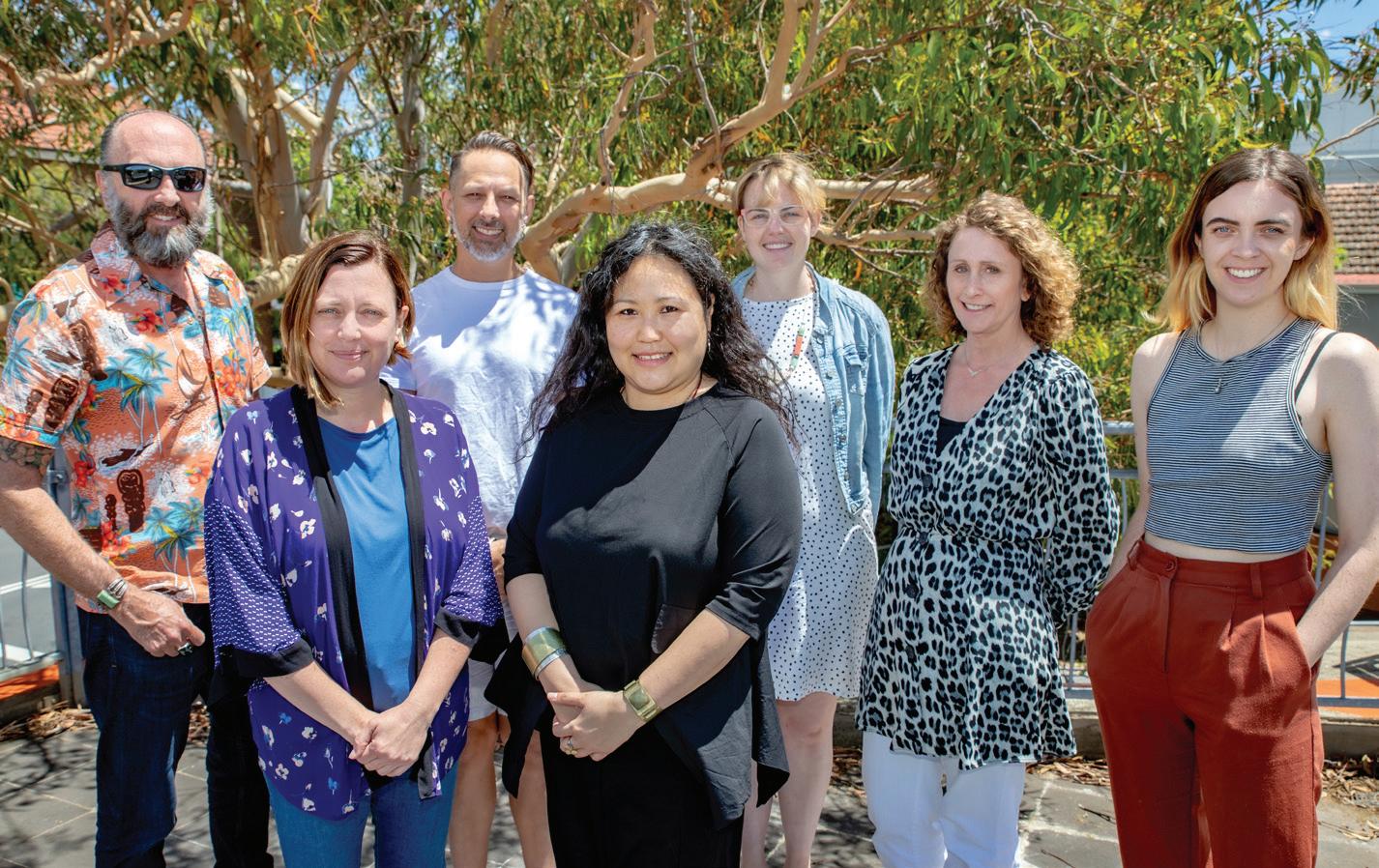
3 minute read
HISTORY
HISTORY TIMBER + BLOOD By Alec Smart
Image: Construction Suspension
Advertisement
Bridge For Water Pipes, Lane
Cove River 1890
FAt the end of the 18th century, British colonists crossed the harbour from their Sydney Cove settlement and began harvesting timber around the lower reaches of the Lane Cove River – which the Indigenous Cammeraygal people knew as Turrumburra. FOR millennia the Cammeraygal resided in sandstone caves and In 1790 a military fort was constructed at Woodford Bay, ocbark humpies across Lane Cove’s five ‘fingers’ - the peninsulas cupied by a garrison of marines, and for the next three decades now known as Linley Point, Riverview, Longueville, Northwood they waged war on the remaining Aborigines, including Pemuland Greenwich - in close proximity to the seafood they gathered wuy, the fearless resistance leader thought immune to bullets. along the shoreline or caught in the tidal waters. In 1797 the Secretary of the Colony recorded that Aborigi-
Over 40 Aboriginal sites have been recorded in Lane Cove Na- nes were ‘exceedingly troublesome to the settlers in the Lane tional Park, including axe-sharpening grooves in rocks, assorted Cove area.’ shelters, shell middens, cave art and rock engravings. In April 1816, the autocratic Governor Lachlan Macquarie,
Unfortunately, the British settlers’ encampments and (from infuriated by the growing Indigenous resistance to European 1794) land grants inevitably drew them into conflict with the na- settlements expanding out from Sydney Cove, ordered a 23tives as they competed for resources. day military mission to resolve the issue. His soldiers were in-
Eucalypts – blackbutt, bluegum and stringybark – and hard- structed to capture any Aboriginal peoples they encountered, woods including red mahogany and yanderra (turpentine) were from Lane Cove west to the Nepean and Hawkesbury rivers, felled by the new arrivals for the construction of boats, furniture, and shoot dead all resisters. This resulted in at least one refencing and houses. corded massacre.
In the freshwater estuaries feeding the river, grasses were cut Thereafter, British business interests in the Lane Cove region for roofing thatch and animal fodder. expanded rapidly, with the arrival of dairy farms, orchards and
Shells gathered from centuries-old Aboriginal middens were piggeries, after the forests were cleared. Roads soon traversed burned to produce lime for mortar used in construction. the steep ridges down to the waterfront wharves, enabling easy
Burns Bay Road in Linley Point began as a bullock cart route to transportation of goods to Sydney town. enable former convict William Henry to transport timber from his In 1831, the headland of Longueville (which wasn’t named 1000-acre forest leasehold to boats on the river. until 1924), became the site of one of Australia’s first manu-
Tragically, a 1789-90 outbreak of smallpox decimated the In- facturing industries with the production plant for Rupert Kirk’s digenous populations around the Sydney basin. soap and candles.
Join our community @
Kirk named the area Woodford Park and also attempted to grow tobacco and grapes, without success. (Rupert Kirk was not related to Scottish industrialist James S Kirk, who, coincidentally, in 1839, founded the American brand Kirk’s Soap in New York, still in production today.)
In 1851, Ludowici and Radke relocated their abattoir and tannery from Balmain to the stream flowing into Burns Bay – now known as Tannery Creek. 1861 saw their partnership divide and set up either side of the creek, with Ludowici eventually “BRITISH BUSINESS INTERESTS buying out Radke, his company continuing for another century. Rich clays suitable for IN THE LANE COVE REGION EXPANDED RAPIDLY, WITH THE making drinking vessels and storage containers attracted potters, and the Phoenix PotARRIVAL OF DAIRY FARMS, ORCHARDS AND PIGGERIES, tery Company was founded AFTER THE FORESTS WERE CLEARED. in 1883, followed in 1886 by the Sydney Pottery Company, ROADS SOON TRAVERSED THE both sourcing their clay from STEEP RIDGES DOWN Gore Creek. Pottery Green Oval now TO THE WATERFRONT” commemorates this thriving industry.
In 1894, the Chicago Starch Mills opened, and produced starch and cornflour on a site previously used as a boiling-down work near Stringybark Creek in North Lane Cove. The processing plant was finally closed and sold in Jan 2020 by its latest owner, US-based global starch and sweetener producer, Ingredion. Chicago Starch Mills, also know as Clifford Love Cornflour Mills, opened in 1890 at 150 Epping Rd, on the banks of Lane Cove River.

The Perfect Christmas Gift A Lane Cove Gift Card
Help support your favourite local businesses this Christmas by purchasing a Lane Cove Gift Card that can be redeemed at more than 75 local stores and restaurants.


